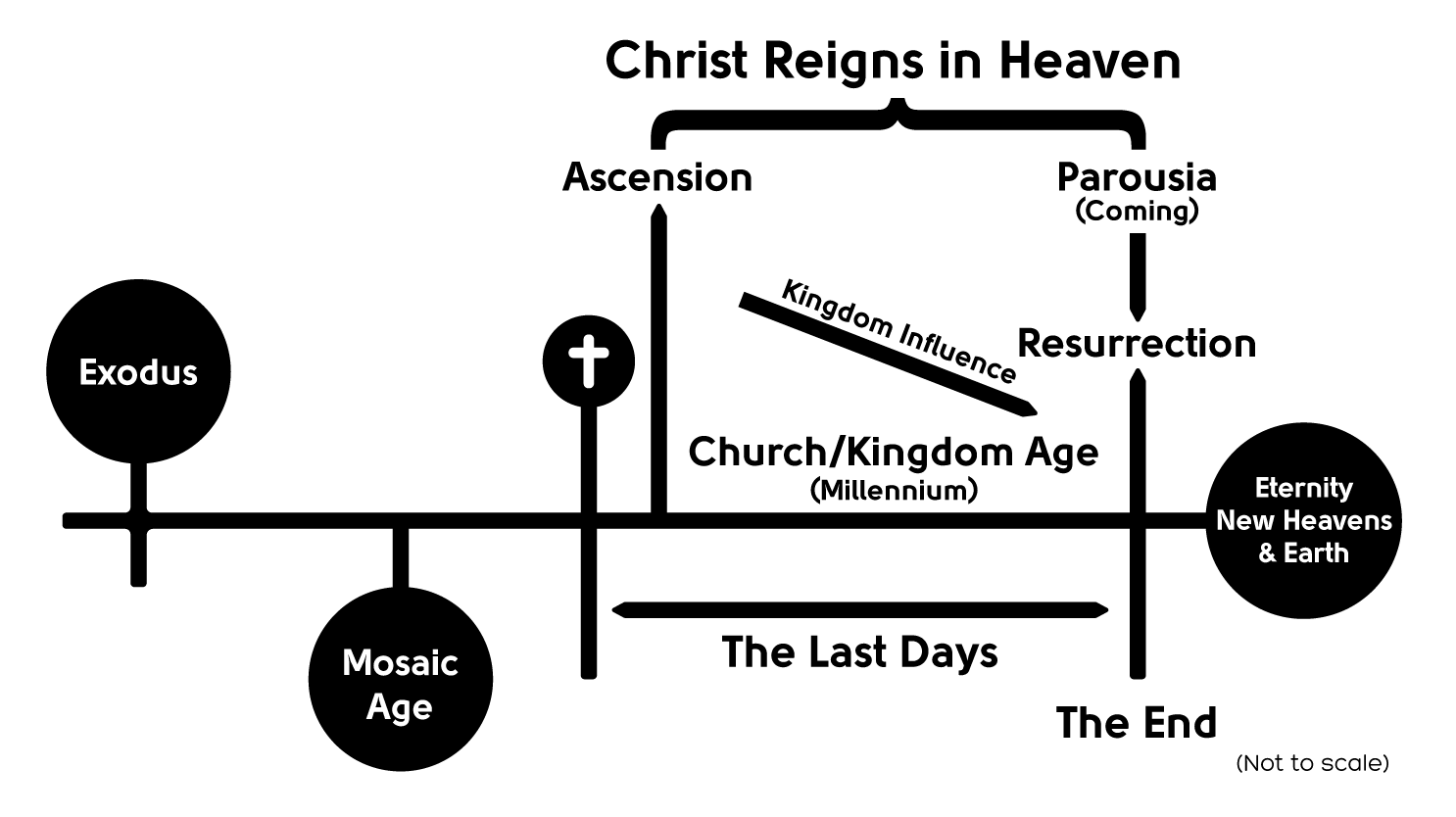In his foreword, Dr. Tom J. Nettles mentions a key feature of my forthcoming book, Inmillennialism: Redefining the Last Days, which McGahan Publishing House plans to publish in August:
To keep the progress of his argument clear throughout this book, Rogers has 30 diagrams that illustrate the viewpoint. Some of these add details to the existing paradigm as the argument advances and some of them compare his viewpoint to other options. These are clear and helpful, not at all intimidating. Visual aids are added gradually as needed. Rogers constructs them like a good engineer would do when designing a machine—every part necessary, none left over.
Perhaps engineers like myself are more inclined than most (normal) people to use diagrams. Clarence Larkin, a former mechanical engineer, wrote a popular book in which he used ninety hand-drawn diagrams—he lived before the computer age—to teach his dispensational premillennialism. I marvel at the patience this work required.
My book has only a third of Larkin’s diagram count, and they were not hand-drawn. A local graphics artist—Drew Sanders of DSDSGN here in Gadsden, AL—just finished reformatting the thirty diagrams Dr. Nettles mentioned. I am thrilled with them and want to share a few with you ahead of the book’s publication. They will also provide a glimpse into how the book develops its thesis.
Diagram 1: Amillennialism
The book contains a brief description of the four primary prophetic models currently available. Most Christians who hold definite views of prophecy claim one of them as the system that best characterizes their understanding of God’s word. Theologians call one of those models amillennialism. Here is the diagram that shows its principal features:

Diagram 2: The Foundation of Inmillennialism
One of my reasons for writing Inmillennialism was to show that a robust prophetic model arises from a straightforward exposition of two key passages of Scripture: the Olivet Discourse and 1 Corinthians 15. I begin with simple diagrams that show Jesus foretold the temple’s destruction and that the disciples knew that event would end the Mosaic age (Matt 24:1–3):

This simple structure serves as the basis for all that follows.
Diagram 3: More Details of Inmillennialism
As my explanation of the Olivet Discourse continues, I add many details to the basic diagram, explaining the reason for each. At the end of the Discourse, the diagram has expanded to look like this:

Conclusion
Two key elements in 1 Corinthians 15 provide the finishing touches to the inmillennial model, but I don’t want this post to be a complete spoiler, so I will stop at this point.
I hope the subject is inviting enough to cause you to read the book and consider the impact a renewed prophetic vision can have on our churches and individual lives as we serve the Lord in his kingdom. I also hope the diagrams Drew and I have developed live up to Dr. Nettles’ billing: “clear and helpful, not at all intimidating.”

4 comments
I need to understand your model more. My question is:
Thank you for this question; it is one people often ask when they learn about inmillennialism. Jesus promised to return within his generation in places like Matt 10:23; 16:27–28; 24:34 and many others. There is every reason to believe that Acts 1:11 refers to that promise. The Greek word used for “in like manner” (Acts 1:11 KJV) does not mean the details of two actions are identical. For example, Jesus said he would have gathered Israel “as (i.e., in like manner) a hen gathereth her chickens under her wings” (Matt 23:37). The same Greek word occurs in both verses. It does not mean that Jesus’ call was identical to the chicken’s cluck; it is a word indicating certainty—as surely as a hen gathers, so Jesus would have gathered.
The coming in Acts 1:11 was not visible to the natural eye. About forty days earlier, Jesus said to the High Priest: “from now on you will see the Son of Man seated at the right hand of Power and coming on the clouds of heaven” (Matt 26:64 ESV). The High Priest could not, with his natural eyes, see Jesus at God’s right hand; neither could he see Jesus “coming on the clouds.” He would “see” both through the events that would happen: the Roman armies destroying Jerusalem at the command of the glorified and reigning Son of Man.
That said, inmillennialism teaches a physical resurrection of the body at the end of the church age. Glorified saints will enjoy fellowship with the glorified Son of Man, but Acts 1:11 is not speaking directly about that event.
If this is not clear, please ask for further explanation. Also, you may want to consider getting a copy of my book that will be published on Aug 18, 2020.
Hi Mike,
As an Inmillennialist, when do you think Christ will literally, physically and bodily come down from heaven to earth?
I understand this to be at the end of the millennium reign (Church Age). The general resurrection will occur first when all the dead (both believers and non-believers) will rise from their graves upon hearing the voice of Christ. Christ will descend from heaven and the resurrected dead in Christ will meet him in the air, followed by the living believers who are transformed into the same glorious resurrection body. Then the general judgment immediately follows where Christ separates the saints from the unbelievers (unjust). Then God transforms the current creation to a new heaven and new earth. On this new earth Christ will establish his everlasting kingdom with all his saints, the eternal state. Are we of the same understanding of this?
Scriptures:
Regards,
Claro
Greetings once again, Claro!
I again apologize for misunderstanding your comment of August 5 here.
I believe a bodily coming of Christ is a necessary part of the resurrection “at the end of the millennial reign (Church Age)” as you describe. And, yes, we have the same understanding regarding the general resurrection and the final judgment.
I have a somewhat different understanding of the new heavens and earth. I explain my view in a series of four blog posts beginning with Death in Heaven? I will be very interested to know what you think of those posts!
Yours in Christ,
Mike